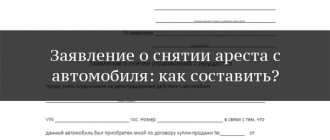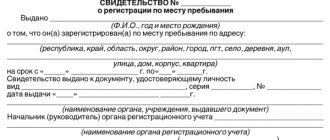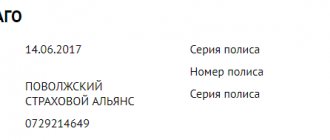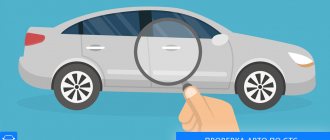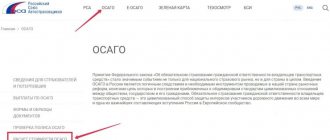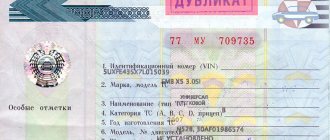Seizure of property, for example, a car, which includes a ban on registration actions, is a measure to ensure the execution of a court decision by negligent debtors. For example, the debtor refuses to repay the debt - alimony, loans, taxes, fines.
But as soon as the bailiff begins to seal and confiscate his car, the money is immediately found.
Another situation also happens: the debtor understands that any day now a bailiff will come to his garage and take his “swallow” to be torn to pieces by evil creditors. And the creditors are his ex-wife and children. And then, with tears in his eyes, he decides to get rid of such property in order to leave his “bloody little ones” with their noses.
If you think that this topic concerns exclusively malicious non-payers of alimony and taxes and other scoundrels, then we will inform you - we have bad news for you.
As it was said in the classics of Soviet cinema: “Everyone who doesn’t have a car dreams of buying one, and everyone who has a car dreams of selling it. And he doesn’t do this only because if you sell, you’ll be left without a car. Man, more than any other living creature, loves to create additional difficulties for himself.”
Reasons for car seizure?
Let's look at the most common reasons why property may be seized and why restrictions may be placed on it.
- If the owner of the car owes more than 3,000 rubles in enforcement proceedings;
- The presence in court of a civil case regarding the division of jointly acquired property of the spouses, which is a car. Or cases under a loan agreement, where the collateral is a car;
- Consideration by an arbitration court of a bankruptcy case of a potential seller;
- Initiation of a criminal case by law enforcement agencies, in which the vehicle was seized.
Standard verification methods
In addition to the above methods, you can use standard verification options. These include:
- Submitting a corresponding request to the local tax office. This method, unfortunately, is only suitable for car owners or specially authorized persons who conduct business with this property.
- Personal appeal to the traffic police.
- Filing an application to the court. This method is quite complex, time-consuming and financially expensive.
But, as you can see, modern verification methods are much more convenient and take an order of magnitude less time.
What is the procedure for imposing restrictions?
Restrictions on the disposal of property are established by the FSSP. The service does this on its own initiative as part of enforcement proceedings for debt collection. Or on the basis of a relevant judicial act when considering one of the above cases.
The bailiff arrests the debtor's vehicle with the obligatory participation of witnesses and with the preparation of a corresponding act (inventory of property).
The description must indicate:
- data of persons present at the arrest;
- name (make) of the car and its preliminary assessment;
- type, volume and period of restriction of the right to use property;
- a note of seizure, or data of the person to whom the car was transferred for safekeeping.
Who can seize transport and in what cases?
The seizure of property can be established by a bailiff if the amount of debt is more than three thousand rubles.
Restrictions on disposition may also be imposed by the court in order to preserve property until a final decision is made in the case:
- in civil cases (for example, during bankruptcy proceedings in order to prevent the sale or destruction of property, or when considering a dispute over a loan agreement in which the seized vehicle was collateral);
- criminal (at the request of the investigator for the purpose of executing a sentence in a civil suit, collecting a fine or confiscating property).
Debt on alimony
Another common reason for placing encumbrances on a vehicle is arrears of child support. As in the case of credit debt, the car can be sold at auction in order to pay off alimony debt.
If a citizen has arrears on alimony, you can check the car for arrest and restrictions with bailiffs, and find out reliable information about the presence or absence of encumbrances on the car.
You can verify a car for arrest and restrictions with bailiffs using the website of both official authorities and other services, for example the verification portal auto.rus.
How to check a car for seizure?
If you happen to encounter an “arrested” iron horse when purchasing, then you are out of luck. And most likely it will be confiscated. Well, it happens! You simply did not exercise sufficient caution when checking the vehicle before purchasing it.
There are free Internet resources that allow you to check by state registration number or VIN whether there are any restrictions on a particular car: https://pristav-russia.ru/services/proverka-avto-na-ogranichenia-fssp.html.
In addition, such information can be checked on the website of the traffic police and the bailiff service.
Ways to check a car for arrest
There are several effective ways to help a future car owner check his car for seizure. Such diversity will help you choose the only correct and convenient solution for you, taking into account all your individual characteristics.
Check on the official website of the traffic police
The simplest and most reliable way to check is the official website of the traffic police. Here is a special service - “Car Check”. Using this service, you can:
- Check the registration history of cars in the traffic police for various owners (vin number is needed);
- Check the car for involvement in an accident using the vin number, starting from 2015. Please note: you can only check those traffic accidents that were recorded by the police and then registered with the traffic police automated information system;
- Check for search by vin number, chassis and body number;
- Check for any restrictions imposed by vin number, body number or chassis number.
- In addition, on this resource you can find links to checking the car to see if it is in collateral, as well as the availability of compulsory motor liability insurance.
Checking a car for arrest by VIN code
You can clarify information about whether the vehicle is under arrest by the bailiffs using the special Autocode service. How to do this practically? Enter the vin code or car number in the search bar, then click on the “Check” button and literally in a few minutes you will be provided with a report on the vehicle of interest. More detailed information will be available only after payment for the corresponding service.
Checking a car for arrest by license plate number
Checking your car using Autocode will allow you to clarify the following information about:
- The presence of all kinds of restrictions and arrests;
- Participation in road traffic accidents;
- History of fines;
- Vehicle mileage;
- History of registration actions;
- The number of previous owners of this vehicle;
- About insurance, technical inspections and other important information.
And most importantly, such a check of a car for arrest by bailiffs will not take up much of your time. Everything will take a maximum of five minutes, no more.
Bailiffs Service
You can check your car using the online services of the FSSP - the Federal Bailiff Service. You can use this service only after entering the full name of the car owner, his date of birth and the territorial body - the region of registration of the individual, his place of residence or the place in which his property was registered.
This service has a significant drawback. In order to check the car, you need to enter the personal data of the car owner, which is not always easy to obtain when purchasing a vehicle. It is not possible to search for data in the FSSP database by car number.
How to check a car for arrest
You can check the history of a vehicle at any time convenient for you using a special application developed for the Android and iPhone platforms by the Autocode service. After installing the application, all you need to do is enter the vehicle's VIN or license plate number. In just five minutes, a special report will be generated with a detailed history of the vehicle you are interested in. All reports sent to you are saved in a separate section of the application. In addition, a link to the response is sent as an SMS to your phone and email.
But such verification has a significant drawback. It is paid. The cost of the report is 349 rubles. Of course, compared to the problems that are possible when buying an untested car, these are trifles.
Checking a car using Autocode: why is it important?
There are at least three main reasons why you should use such a service:
- Unlike other resources that provide relevant services, on the Autocode portal there is no need to look for the VIN; finding out the vehicle registration number will be quite enough.
- Without a VIN, the Autocode service does not check the car. For example, if you need to check a Japanese car, you will have to enter the body number or registration number.
- Autocode employees have developed special software for Android and iPhone. Thanks to this utility, you can check the vehicle directly during the transaction.
- All information data that will be subsequently sent to you is obtained only from official sources - judicial and executive authorities, the State Traffic Safety Inspectorate of the Ministry of Internal Affairs of the Russian Federation, as well as large insurance companies.
What happens if you don't check the car before buying?
Suppose you decided to save money and did not buy a new car at the dealership. What keeps you from doing this is the high cost and the requirement for mandatory service from an official dealer to maintain the warranty. And you also don’t like a significant loss in value in the first three years of operation.
You thought and thought and bought a used car. And they didn’t necessarily buy it second-hand, since many official dealers also sell used vehicles that once left the gates of their stores. Moreover, dealers provide a guarantee for such cars.
So you arrive in a newly purchased car to the department of the State Traffic Inspectorate of the Ministry of Internal Affairs of Russia to register it with the state. And instead of new license plates, an unpleasant surprise awaits you. According to the traffic police database, your newly acquired property has been seized.
How so? Constraints can be expressed in the following ways:
- Prohibition to dispose of property (prohibition on registration actions, prohibition on carrying out technical inspection);
- Restriction of the right to use property (the car will remain in the owner’s storage, but it is prohibited to use it, that is, the car becomes “real estate”);
- Seizure of property (the car will kindly be placed in a special parking lot until better times).
Features of selling and buying a seized car
Checking the arrest with bailiffs is necessary to confirm the legality of the sale of property. Some owners believe that if they sell such vehicles, the problem will solve itself. But according to the law, seized property can only be sold with the permission of the debt collector and bailiffs. After the sale, the owner undertakes to repay the existing debt, the difference is kept for himself.
This option is possible. The seller tells the buyer that he will deregister the car, and then he will need to register it again with new license plates. But this way of selling doesn't work. It is impossible to deregister a seized car - the traffic police will refuse the owner.
If somehow you managed to buy a car, then the new owner may have a lot of problems. This is the seizure of property, the involvement of a fraudster as an accomplice, and a long trial. It is better to refuse to purchase such property, even if the offer is very attractive.
You can legally buy a car only in one case - if it is sold not by the owner, but by a party interested in repaying the debt. So, many banks have a separate section where you can choose a good and inexpensive car. But the credit institution immediately indicates that the car has an owner and the property is seized.
Is it possible to drive a car if it is under arrest?
Well, of course you can! If a car has a steering wheel, wheels and other necessary parts, why not drive it? The only question is the distance of travel.
If the FSSP has established a restriction on the right to use property or its confiscation, your trip will end near the first traffic police officer who decides to stop you to check your documents. After which you will have to go to the seller on your own two feet and say some kind words to him.
If there is a ban on registration actions, coupled with a ban on carrying out a technical inspection, then you can “peacefully” ride while your MTPL insurance policy is in force, to renew which you need to undergo a technical inspection.
We have painted an interesting perspective for you, haven’t we?
Are you going to sell a car that is under arrest?
And this arrest, among other things, contains a ban on registration actions established by the Federal Bailiff Service. However, remember that the Criminal Code of the Russian Federation provides for liability for illegal actions, incl. alienation and illegal transfer, in relation to property subject to seizure with a maximum penalty of up to two years in prison.
Arrest upon division of property
During the civil process for the division of property on a car, an injunction is imposed on registration actions when there are grounds for this. Most often, such a decision is made in the case where the vehicle is the disputed property of the spouses.
In order to prevent the vehicle from being sold before the division of property, the court may issue a ban on registration actions. Note that in this case, when checking a car for prohibitions and restrictions with bailiffs, there is no point in conducting a check, since such information will not always be displayed.
It is important to know that the court makes a decision to impose a ban on registration of a vehicle in the event that during the trial a petition was received from one of the parties. The court does not independently decide to impose a ban.
